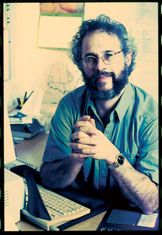|
|
The Studio of Dreams
|
July 1998 |
|
If you build it, they will come.
I heard the disembodied voice as clearly as if it were coming from our hard-driving publisher. "If you build it, they will come," it insisted. At first I thought I had fallen asleep with the television tuned to Field of Dreams. But no, I wasn't dreaming about Kevin Costner constructing a baseball diamond in an Iowa cornfield, and I swear I wasn't smoking corn silk. I was merely contemplating this month's cover story, "Build a Personal Studio on Any Budget."
Believe me, we editors had much to contemplate before we got this story mixed and in the can. Its no picnic planning the gear for eight well-integrated studios within the limits of strict budgets. But the struggle itself was the point of the exercise: we didn't merely spec products, we designed systems, and we explained why we chose each piece. We want you to come away from this article not merely drooling over gear but thinking about your studio master plan.
It is no coincidence that this story and our 1999 Personal Studio Buyer's Guide are hitting the newsstands simultaneously. The two were designed together and combine to offer you a systems approach to designing and growing your studio. PSBG's lead feature, "Holistic Studio Design," offers a theoretical framework for designing a complete, integrated studio. Having read that story, go back, and reread this issue's cover feature, where we put this theory into is practice. The two together should show suit the big picture.
Obviously, many EM readers don't have to build their studios completely from scratch. You might, however, be considering a redesign or wish to dramatically expand your studio. In either event, the principles introduced in the Personal Studio Buyer's Guide and illustrated in "Build a Personal Studio on Any Budget" apply.
"Ease his pain," whispered the mystery voice. Now what the heck does that mean? After some thought, the message was clear: designing and building a dream studio’Äîor its foundation’Äîis just the start. Mixing is one of the most difficult and indeed painful stages of' production. So Associate Editor Jeff Casey was dispatched to seek the advice of mixing guru Bob Clearmountain on how to ease the pain of mixing, or at least, how to achieve worthwhile results. Clearmountain hates giving interviews, but Casey was a man on a mission: he begged and beseeched, and Clearmountain assented. Once you have read "Mixer with the Midas Touch" (p. 98), I think you'll agree that it was well worth the effort.
"Go the distance," hissed the specter. The odds that "they" will come to your studio of dreams are a lot better if you or the bands you produce are getting public exposure by performing live. One way to get those gigs, of course, is through the booking agent. Few musicians like dealing with agents, but if we're going to achieve success, we might have to go the distance and learn the ropes. This month's "Working Musician" column discusses the basics of booking’Äîwith and without agents’Äîespecially for local and regional gigs.
This business of music can lead you to some strange and wonderful places. It has taken me all over this land and led me to work at this magazine, a world I had never even considered. Indeed, if you "build it" and ''go the distance, " you might reach goals beyond your wildest dreams. |
